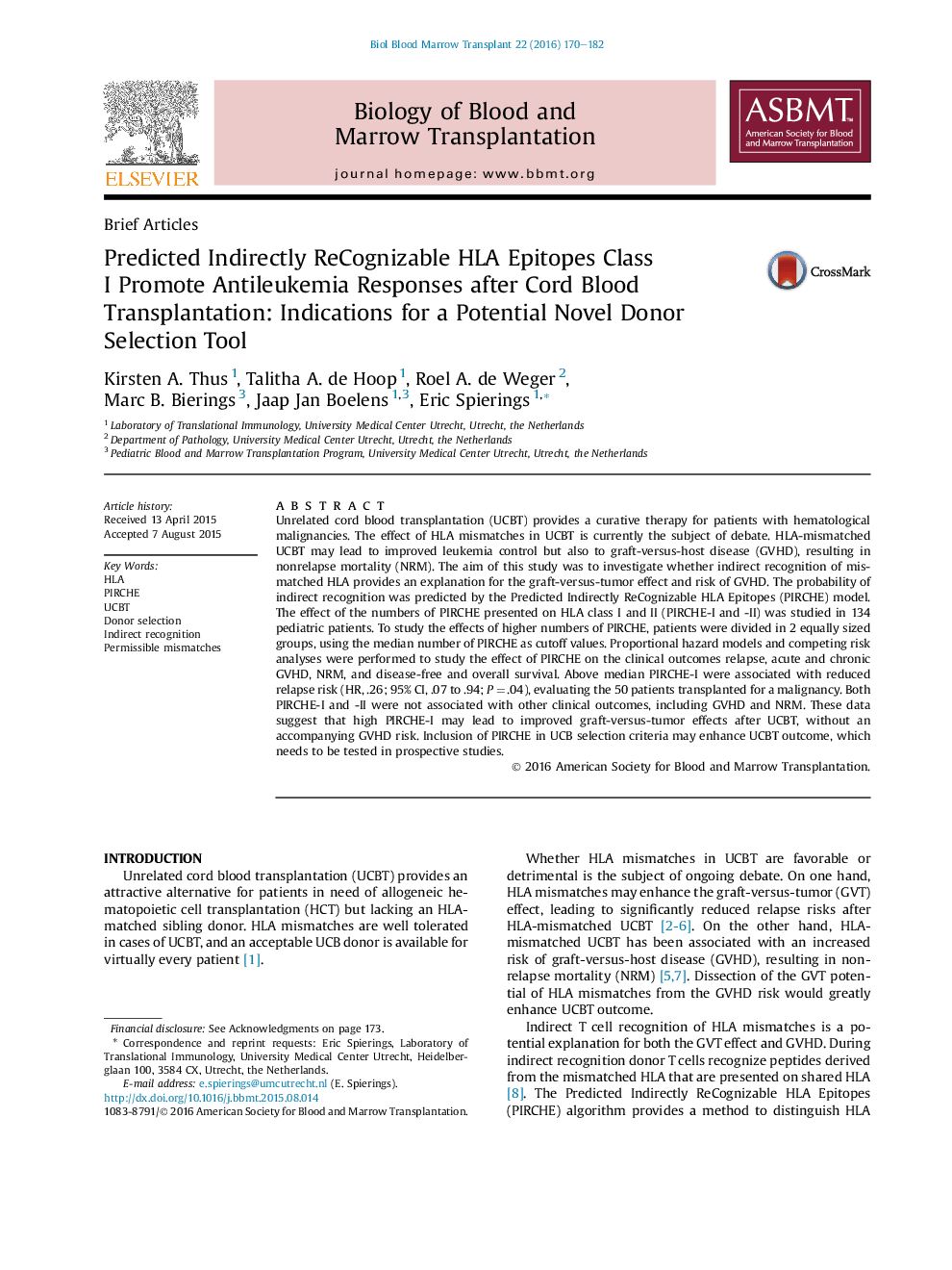| Article ID | Journal | Published Year | Pages | File Type |
|---|---|---|---|---|
| 2101421 | Biology of Blood and Marrow Transplantation | 2016 | 4 Pages |
Abstract
Unrelated cord blood transplantation (UCBT) provides a curative therapy for patients with hematological malignancies. The effect of HLA mismatches in UCBT is currently the subject of debate. HLA-mismatched UCBT may lead to improved leukemia control but also to graft-versus-host disease (GVHD), resulting in nonrelapse mortality (NRM). The aim of this study was to investigate whether indirect recognition of mismatched HLA provides an explanation for the graft-versus-tumor effect and risk of GVHD. The probability of indirect recognition was predicted by the Predicted Indirectly ReCognizable HLA Epitopes (PIRCHE) model. The effect of the numbers of PIRCHE presented on HLA class I and II (PIRCHE-I and -II) was studied in 134 pediatric patients. To study the effects of higher numbers of PIRCHE, patients were divided in 2 equally sized groups, using the median number of PIRCHE as cutoff values. Proportional hazard models and competing risk analyses were performed to study the effect of PIRCHE on the clinical outcomes relapse, acute and chronic GVHD, NRM, and disease-free and overall survival. Above median PIRCHE-I were associated with reduced relapse risk (HR, .26; 95% CI, .07 to .94; PÂ = .04), evaluating the 50 patients transplanted for a malignancy. Both PIRCHE-I and -II were not associated with other clinical outcomes, including GVHD and NRM. These data suggest that high PIRCHE-I may lead to improved graft-versus-tumor effects after UCBT, without an accompanying GVHD risk. Inclusion of PIRCHE in UCB selection criteria may enhance UCBT outcome, which needs to be tested in prospective studies.
Keywords
Related Topics
Life Sciences
Biochemistry, Genetics and Molecular Biology
Cancer Research
Authors
Kirsten A. Thus, Talitha A. de Hoop, Roel A. de Weger, Marc B. Bierings, Jaap Jan Boelens, Eric Spierings,
